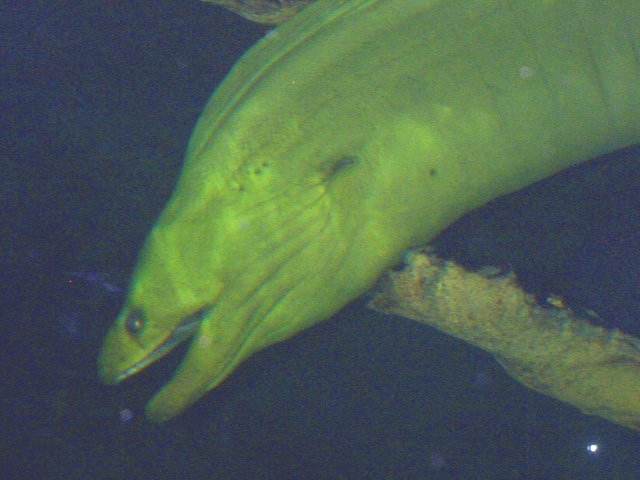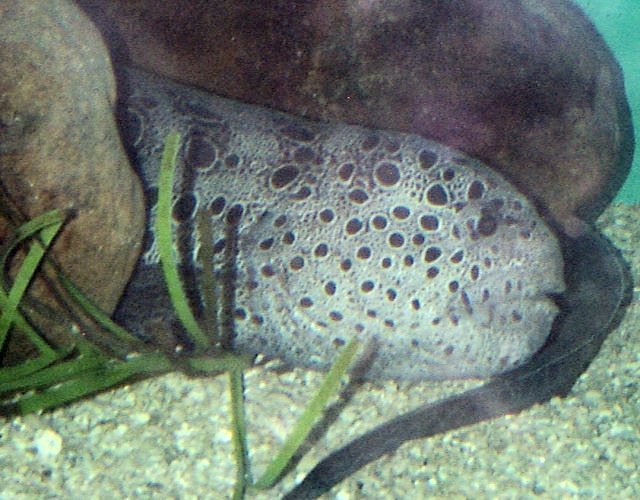(and why is an electric eel not one of them?)
The electric eel is not a true eel. Nor is the "wolf eel" in the picture below. The moray eel, on the other hand, is a true eel. What's the difference? The easy answer is that a true eel is a member of the fish order Anguilliformes, and that other eel-like fish are not. But this begs the question: what characteristics are used to place a fish in the eel order?
 Moray Eel |
 Wolf Eel |
1. They have a dorsal
fin that is continuous with the caudal and anal fin.
2. They have very small
, embedded scales or no scales.
3. As juveniles and
adults, members of the family Anguillidae live in fresh water, but they
breed in the ocean, where most other members of the eel order, including
the Moray, spend their entire lives. These freshwater eels are skin-breathers,
absorbing oxygen into dense beds of capillaries that lie very close under
the skin.
4. They are "slippery as an eel" due to the production
of slime. In the green moray, yellow slime overlying a blue body
produces its greenish color.
5. Larval eels are flattened ribbonlike creatures
and look so different from the adults that some larval forms were once
considered to be separate species of fish!
6. They have numerous
sharp teeth.
7. Freshwater eels are an important food fish
in many countries. Moray eels, on the other hand, are toxic.
The "wolf eel" is a member of the Family Anarhichadidae (wolf fishes). More information about wolf eels can be found here. Electric "eels" are members of the Family Electrophoridae in the Order Gymnotiformes or knifefish. An interesting thing about this order is that their closest relatives are in the catfish order, the Siluriformes. What are some differences between electric eels and true eels?
1. The electric eel
is a freshwater fish, and lays its eggs in fresh water, while most true
eels are marine for at least part of their lives, and all true eels spawn
in the ocean.
2. Electric eels
have no teeth.
3. Electric eels have no dorsal fin.
4. Electric eels are air-breathers. In the
warm, oxygen-poor waters of the Amazon basin, breathing air is an important
survival strategy.
Sources:
http://cnet.windsor.ns.ca/Environment/Advocates/Anim/eel.html
http://www.fishbase.org/Summary/OrdersSummary.cfm?order=Gymnotiformes
http://ag.arizona.edu/tree/eukaryotes/animals/chordata/actinopterygii/gymnotiformes/gymnotiformes.html
http://www.umich.edu/~bio440/fishcapsules98/Electrophorus.html
http://home.planet.nl/~zoete004/anguilliform.htm
http://school.discovery.com/homeworkhelp/worldbook/atozscience/e/176400.html
http://diver.ocean.washington.edu/wolfhistory.html